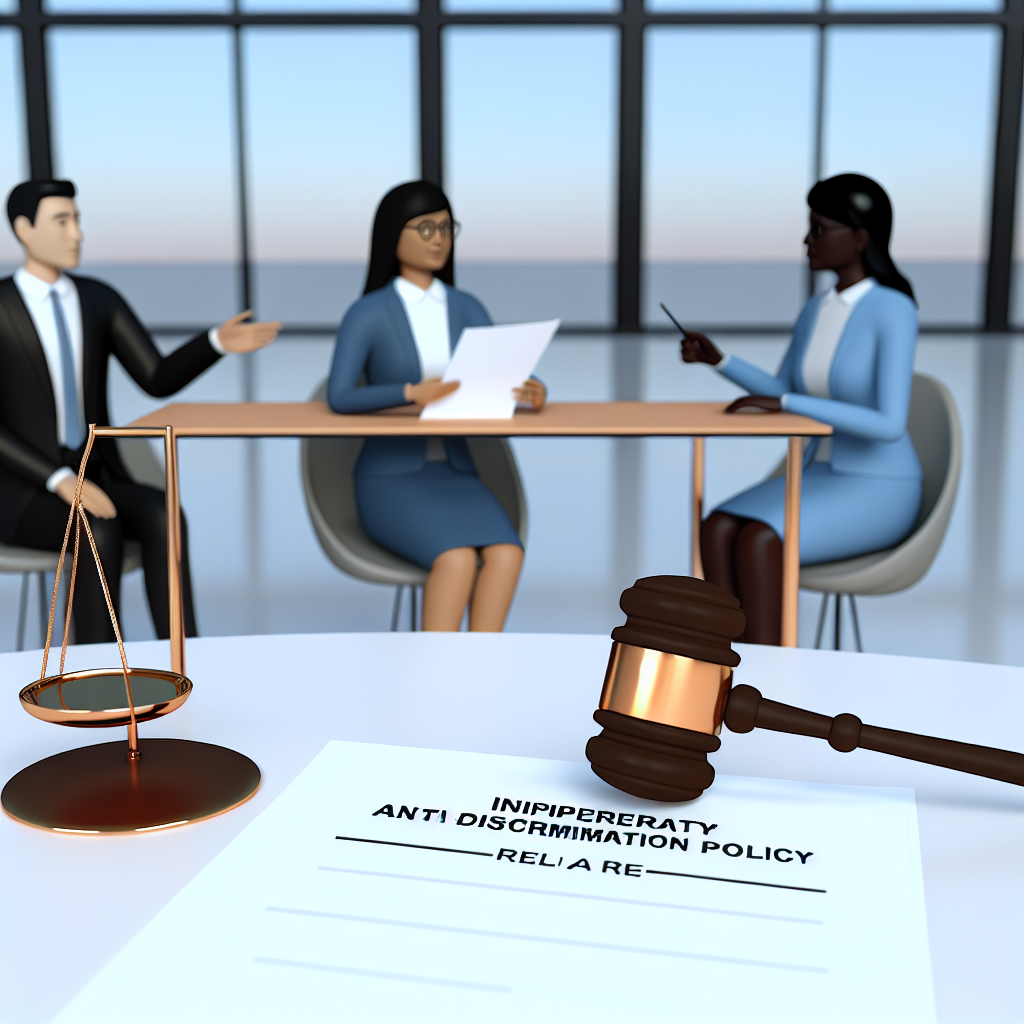
Discrimination in the workplace remains a pressing concern for employers and human resource professionals alike. The implications of discriminatory practices extend far beyond the individual employee; they can disrupt the organisational fabric, affecting morale, productivity, and overall workplace culture. It is essential for HR professionals to navigate through the intricacies of discrimination law and foster an environment that encourages diversity and inclusion.
Understanding Workplace Discrimination
Workplace discrimination occurs when an employee suffers adverse employment actions based on their membership in a protected class, such as race, gender, or disability. These acts can manifest in various forms, including wrongful termination, demotion, or unfair treatment during hiring processes. HR professionals must be vigilant in identifying and addressing such behaviours to mitigate legal repercussions and cultivate a positive work environment.
The Legal Framework
Federal and State Protections
Employers are governed by multiple federal and state laws designed to protect employees from discrimination. Key federal legislations include:
- Title VII of the Civil Rights Act of 1966: Prohibits discrimination based on race, colour, religion, sex, or national origin.
- The Americans with Disabilities Act (ADA): Protects individuals with disabilities from discrimination in various aspects of employment.
- The Age Discrimination in Employment Act (ADEA): Safeguards employees aged 40 and above from discrimination based on age.
In addition to federal protections, state laws may offer broader safeguards. HR professionals should stay abreast of the specific regulations in their jurisdiction to ensure compliance.
Enforcement Measures
With the rise in workplace discrimination awareness, enforcement of these laws has intensified. The U.S. Equal Employment Opportunity Commission (EEOC) plays a critical role in investigating claims and ensuring employers adhere to anti-discrimination statutes. As a result, organisations are required to establish thorough procedures for addressing complaints swiftly and effectively.
Growing Awareness and its Impact
There has been a noticeable shift in employee awareness regarding their rights, leading to increased reports of discrimination allegations. This trend is indicative of a workforce that is more educated about issues surrounding equality and workplace rights. HR professionals must be prepared to engage with these concerns compassionately while adopting proactive measures to prevent discrimination.
Whistleblower Protections
One noteworthy trend in workplace protections is the robust safeguarding of whistleblowers. Employees who report illegal activities or misconduct are protected from retaliation, including wrongful termination. This legal backing encourages individuals to speak out without fear, fundamentally enhancing the workplace’s ethical standards.
Benefits of Addressing Discrimination
Legal Remedies for Employees
When discrimination occurs, affected employees have access to various legal remedies. These can include:
- Reinstatement to their former position.
- Back pay to compensate for lost wages.
- Compensatory damages for emotional distress.
- Punitive damages, aimed at deterring future misconduct by employers.
For example, employees dismissed for discriminatory reasons can file complaints with the EEOC, which may lead to significant financial compensation and changes in the employer’s personnel policies.
Fostering a Positive Workplace Culture
Creating a culture that values respect and fairness is vital for any organisation. By actively addressing discrimination, organisations can foster an inclusive atmosphere. Such an approach not only enhances job satisfaction but also reduces turnover rates, as employees feel valued and appreciated.
Preventive Measures
Implementing clear, fair termination and disciplinary policies is crucial. Employers should assure that procedures treat all employees equitably and make reasonable accommodations for those with disabilities. This proactive strategy plays a pivotal role in mitigating risks associated with potential discrimination claims.
Common Examples of Discrimination in the Workplace
Discriminatory Practices
Discrimination can take many forms. Some examples include:
- Firing an employee solely based on their gender or race.
- Disparities in promotional opportunities due to sexual orientation or religious beliefs.
- Harassment or hostile work environment affecting employees with disabilities.
HR professionals must be watchful for these conditions and respond accordingly to maintain a fair workplace.
Retaliation Against Employees
Retaliation can be a significant issue within companies. Employees who report discriminatory practices or participate in investigations are protected from retaliation. Any punitive actions, such as demotion or dismissal, following a report can result in severe legal consequences for the organisation.
Concluding Thoughts
Dismissal for discriminatory practices is illegal and can lead to profound legal ramifications for employers. Thus, it is imperative for HR professionals to actively engage with the intricacies of discrimination law. By fostering an inclusive and supportive workplace culture and implementing preventative measures, organisations can not only safeguard themselves from legal trouble but can also create an environment where all employees thrive.
In summary, understanding discrimination in the workplace is crucial for HR professionals. The importance of maintaining a fair and inclusive work environment cannot be overstated, as each employee deserves respect and equal opportunities.
If you are an HR professional seeking to deepen your understanding of workplace discrimination and its legal implications, consider referencing key legal texts and keeping abreast of updates from the EEOC and other relevant authorities.
Vadim Kouznetsov is a distinguished entrepreneur and the visionary founder and CEO of JobXDubai.com, the UAE’s rapidly expanding job board. Renowned for his expertise in bridging the gap between job seekers and employment opportunities, Vadim has become a leading authority in the recruitment and job market of Dubai.
